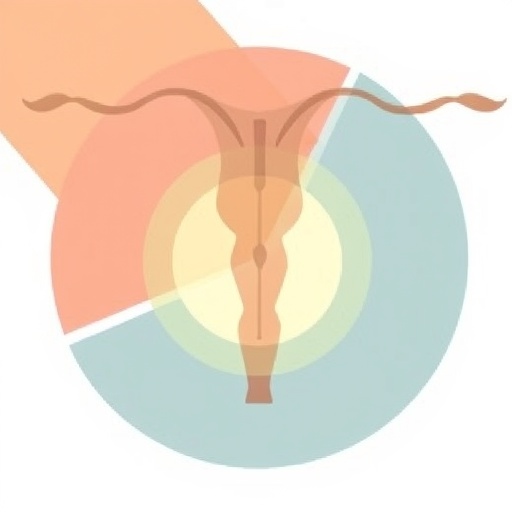
Recent advancements in the understanding of cervical cancer have led to the development of a novel prognostic model, which incorporates cervical cancer-related genes. The research conducted by Zou et al. has illuminated potential pathways for enhanced patient management and tailored treatment approaches. This groundbreaking study is not just an incremental improvement; it represents a significant leap in how we interpret genetic data in the context of cervical cancer prognosis.
Cervical cancer continues to be a major public health concern worldwide, with a vast number of women diagnosed yearly. Despite the advancements in screening and vaccination, the mortality rate remains a pressing issue, partly due to the heterogeneity of the disease. The challenge has always been to predict which patients are more likely to experience aggressive disease progression. The sophisticated model proposed in this study posits a solution by focusing on specific genomic signatures correlated with clinical outcomes.
The approach undertaken by the researchers involved intricate bioinformatics analyses and robust statistical methodologies. By scouring existing genomic databases and patient records, the team aimed to identify key genes associated with cervical cancer progression. Their analysis employed machine learning techniques to sift through vast datasets, ultimately allowing for the identification of gene clusters that hold significant prognostic value.
At the core of this prognostic model lies a unique set of genes that were shown to impact both disease staging and survival rates. Through continuous validation against clinical data, Zou et al. demonstrated the accuracy of their model in predicting patient outcomes more effectively than existing prognostic tools. This evidence positions their model not merely as an academic exercise, but rather, as a viable alternative for clinicians needing reliable diagnostic support.
The potential application of this novel model can radically change treatment paradigms for cervical cancer patients. By effectively categorizing individuals based on their genetic profiles, healthcare providers can tailor interventions, whether it be closer monitoring, more aggressive treatment, or participation in clinical trials. The implications are profound, opening new avenues for personalized medicine in oncology.
Moreover, the model incorporates both known and previously unidentified genes that are essential to cervical cancer biology. This dual focus may empower therapeutic development as researchers delve deeper into the molecular mechanisms underlying the disease. Understanding these pathways could lead to the identification of new drug targets and ultimately improve therapeutic efficacy.
This research underscores the importance of multidisciplinary approaches in tackling complex diseases like cervical cancer. By merging genetics, bioinformatics, and clinical research, the authors have created a comprehensive model that serves not just as a theoretical construct, but as a practical tool for clinicians. It exemplifies how collaborative efforts can yield significant breakthroughs in patient care.
The validation process of this prognostic model involved cross-referencing results with multiple cohorts, ensuring that the findings are applicable across diverse populations. Such rigor underscores the reliability of their model and enhances its credibility. As healthcare becomes increasingly data-driven, studies like this are critical in establishing evidence-based protocols.
Additionally, the researchers acknowledge the limitations of their study. While the model demonstrates promise, it calls for further testing in larger cohorts with varied demographic backgrounds. Continuous refinement and adjustments will likely be necessary as more data becomes available. Still, the progress made thus far is commendable and illustrates a proactive approach to refining patient prognostication.
The implications of this research extend beyond individual patient care; they highlight the potential for cardiovascular surveillance at a population level. If implemented widely, this prognostic model could facilitate resource allocation in healthcare systems, allowing for more effective use of limited medical resources. Screening and treatment can be tailored based on genetic risk profiles, which is especially pertinent in developing regions where cervical cancer remains a leading cause of mortality.
An exciting prospect of this research is the potential integration into existing clinical workflows. The model not only aims to enhance prognostic capabilities but also to flow seamlessly into electronic health records, aiding clinicians in decision-making processes. The synergy between technology and genomics represents a new frontier in personalized medicine that could transform cervical cancer management.
In conclusion, the work of Zou et al. is a pivotal step forward in cervical cancer research. With advancements in genomics and data analytics, the potential for personalized treatment paths becomes more tangible. This model not only exemplifies scientific innovation but also embodies hope for patients who face this challenging disease. Each stride made in understanding cervical cancer at a genetic level brings us closer to reducing its incidence and mortality rates.
The emergence of such advanced prognostic models is essential in the era of precision medicine. It is likely to inspire further research endeavors aimed at dissecting complex diseases through multidisciplinary lenses. As evidenced by the continued evolution of cervical cancer research, the future holds immense possibilities for improvements in screening, treatment, and overall patient outcomes.
As the research community continues to unravel the complexities of cervical cancer, contributions such as these pave the way for a more informed and effective healthcare landscape. Furthermore, they highlight the indispensable role of collaboration and innovation in medical science, fueling advancements that hold the potential to save lives and transform public health practices.
Ultimately, this work serves as a clarion call for a future where genetic insights directly inform clinical approaches, offering patients a personalized roadmap through their cancer journey.
Subject of Research: Cervical Cancer Prognostic Model
Article Title: Construction and Validation of a Novel Prognostic Model Based on Cervical Cancer-Related Genes
Article References:
Zou, D., Wu, X., Xin, X. et al. Construction and Validation of a Novel Prognostic Model Based on Cervical Cancer-Related Genes.
Reprod. Sci. (2025). https://doi.org/10.1007/s43032-025-01973-w
Image Credits: AI Generated
DOI: 10.1007/s43032-025-01973-w
Keywords: Cervical cancer, prognostic model, genomic signatures, personalized medicine, bioinformatics.
Tags: advancements in cervical cancer researchbioinformatics in cancer researchCervical cancer prognosiscervical cancer-related genesdisease progression prediction in cervical cancergenetic data in cancer treatmentgenomic signatures in cancermachine learning in oncologynovel prognostic model for cervical cancerpatient management strategies for cervical cancerpublic health concerns in cervical cancertailored treatment approaches for cervical cancer





